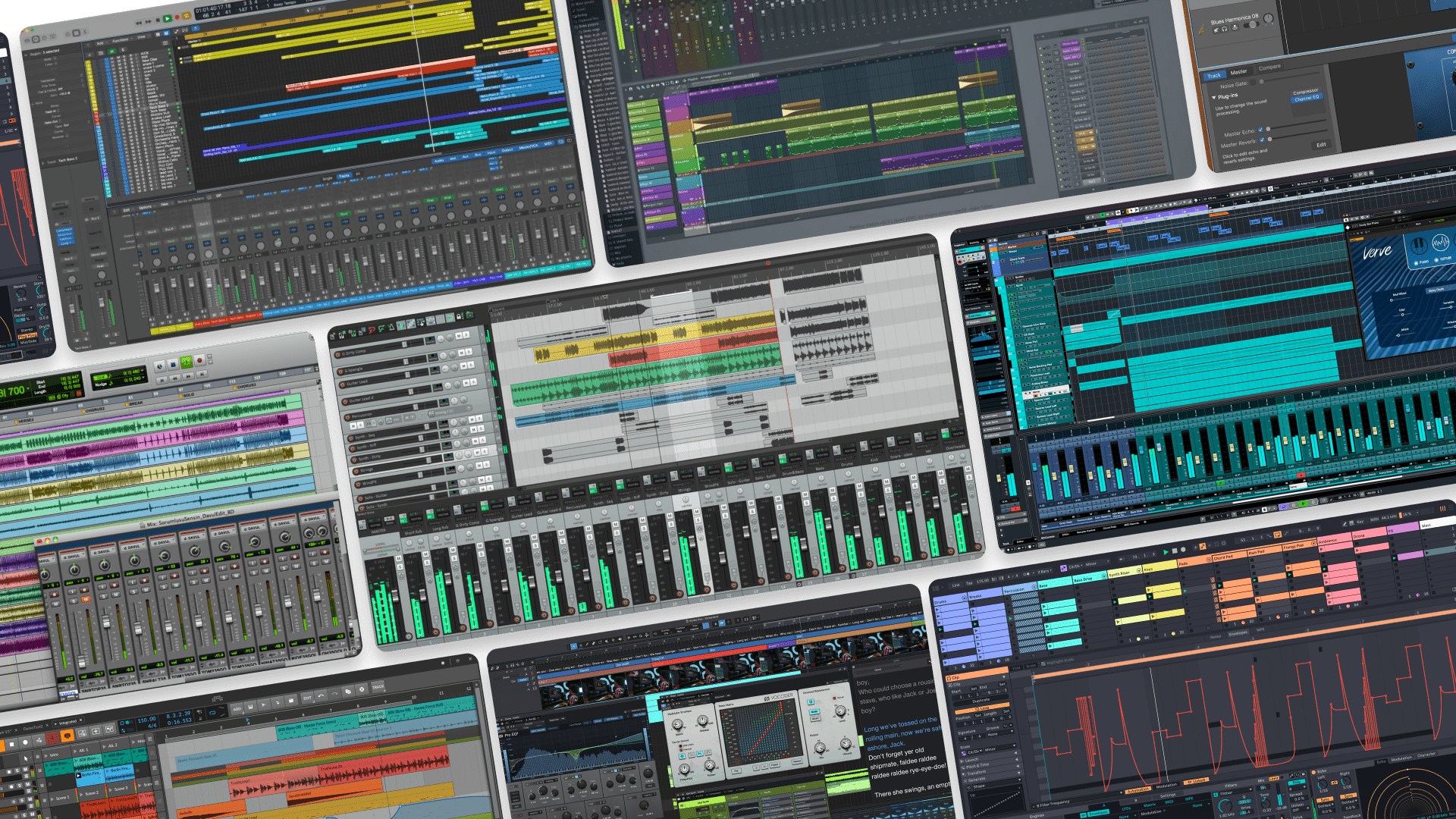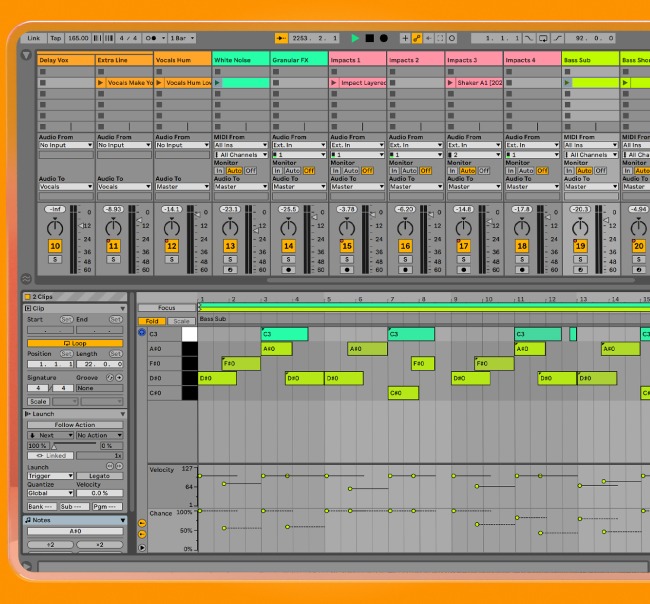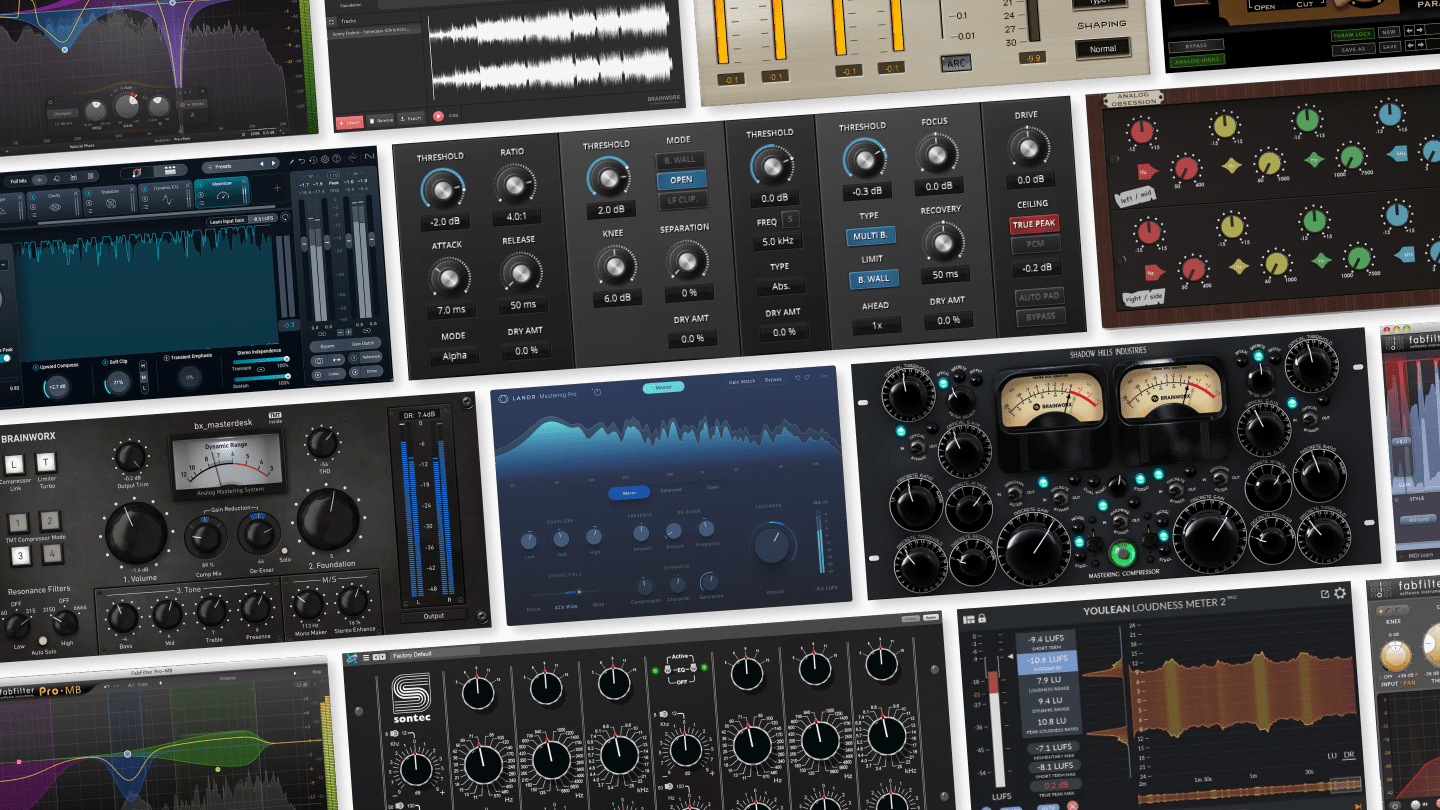
The 11 Best Amp Simulator Plugins and Pedals for Guitar Tested and Approved
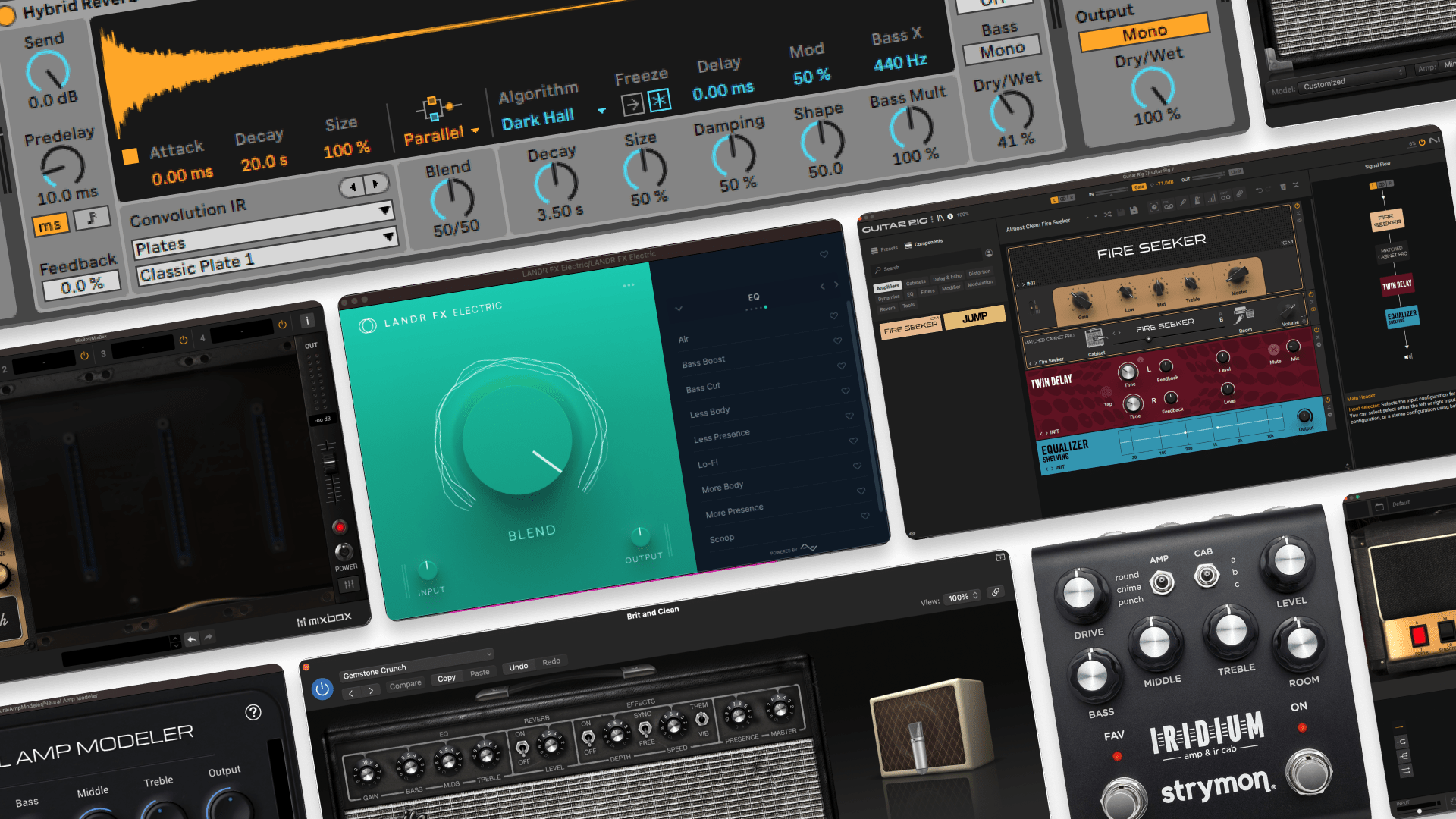
The guitar is one of the most iconic instruments in the world, but recording a loud amp presents a number of challenges, especially for home studio producers on a budget.
That’s why amp simulator plugins and hardware have become so common and important in the modern producer’s toolbox.
It’s also why amp simulator plugins are so good these days and why you might be curious which is the best for you.
In this article we’ll look at what goes into making the best amp simulators, what to expect at different price brackets,and how each could fit into your plugin arsenal.
Let’s get started!
Table of Contents
- Best paid amp simulator plugin: Neural DSP
- Best free amp simulator plugin: Amplitube 5 CS
- Best pedal box: MixBox SE
- Best bass amp simulator: Audified GK Amplification 3 Pro
- Best individual amp model: UAD 55’ Fender Tweed Deluxe
- Best free algorithmic modeler: Neural Amp Modeler
- Best free guitar plugin suite: Guitar Rig 7
- Best user-friendly guitar plugin: LANDR FX Electric
- Best guitar plugin for Logic: Logic Pro’s Amp Designer
- Best amp simulator pedal: Strymon Iridium
- Best guitar plugin for Ableton: Amp & Hybrid Reverb by Ableton
Quick take: What’s the best amp simulator?
In our testing, we found three plugins that stood out to us.
Best overall: Neural DSP
Neural DSP stood out as something special. We were super impressed with the plugin’s overall sound. Its creative options, included presets and user interface set it apart.
If budget isn’t too much of an issue for you, pick up Neural DSP.
Best amp simulator pedal: Strymon Iridium
We didn’t review hardware as much as we reviewed software for this list, but we were impressed with the Strymon Iridium.
For its price, the pedal sounds very good, offering several great amp simulations, tone control, drive and room reverb—all in a compact pedal that’ll squeeze into any pedal board.
Best free guitar amp plugin: IK Multimedia AmpliTube 5 CS
This is a great starting point for bringing amp simulation into your music production workflow.
The plugin offered a number of well-made amps, including a great Mesa Boogie re-creation alongside a number of stompbox pedals and some decent presets.
The plugin also gently offers paywalled upgrades that can easily be demoed, if you like the free AmpliTube amps and want to dive into its paid options.
Three types of amp simulator plugins
Amp simulator plugins and hardware are not created equally. In fact there are three distinct categories of amp simulator plugin, each offering a different level of quality and price range.
Here’s what you can expect from each category of amp simulators.
Circuit modeling distortion preset
At this lowest tier of amp simulator, you’ll find what I’ll call a distortion plugin that’s built into a guitar amp-inspired user interface.
Plugins like this add distortion to an audio signal as you turn up the volume of the “amp.” They’re essentially a distortion preset with added EQ, saturation, compression and reverb.
These plugins will often include knobs for other audio effects like EQ, reverb, and delay.
However, the effect amp simulators in this category can also be achieved with other non-amp themed plugins—so it’s debatable exactly how effective or useful they are.
It’s also a big reason why most of the amp sims in this category are free or come included with various DAWs.
Impulse response amp modelers
Where amp simulators really start to improve in quality is when they start using impulse responses to inform how they model a specific guitar amp.
If you’re curious, an impulse response is created by sending a very small and simple fragment of sound into a physical space or piece of gear, and recording the way that fragment is affected.
In the case of amp modelers, an impulse response will be recorded out of the amp, the data from those recordings is then used to inform the sound of its digital emulation.
That’s why these plugins sound so much better—they offer a powerful way to capture the natural character of expensive vintage gear and neatly package it into a digital version.
It’s also why they’re rarely free, since they require an added level of audio science and engineering to develop.
Algorithmic modelers
Algorithmic modelers take a different approach, using algorithms to model the actual circuitry used in a specific amp.
These algorithms replicate the exact signal flow—the flow of electrical energy through an amp’s transistors, tubes, EQs and reverbs—and match the output of the amp itself.
Algorithmic modelers are often considered to be the best digital recreations of analog hardware, which is why they usually are the most expensive type of plugin available.
The 11 best guitar amp simulators
Now that we’ve dissected each category of amp simulator, let’s dive into the best ones on the market right now.
For this article we tested each plugin with a guitar demo played by yours truly. I tried my best to play a few different styles and I went with a clean but slightly overdriven tone for each plugin.
Here’s the demo with no processing:
For the gear heads out there, this demo was played on a custom Tele at middle position through a Focusrite Scarlett Solo interface.
Every plugin pictured shows the settings I used for each demo. Let’s dive in.
1. Best paid amp simulator plugin: Neural DSP
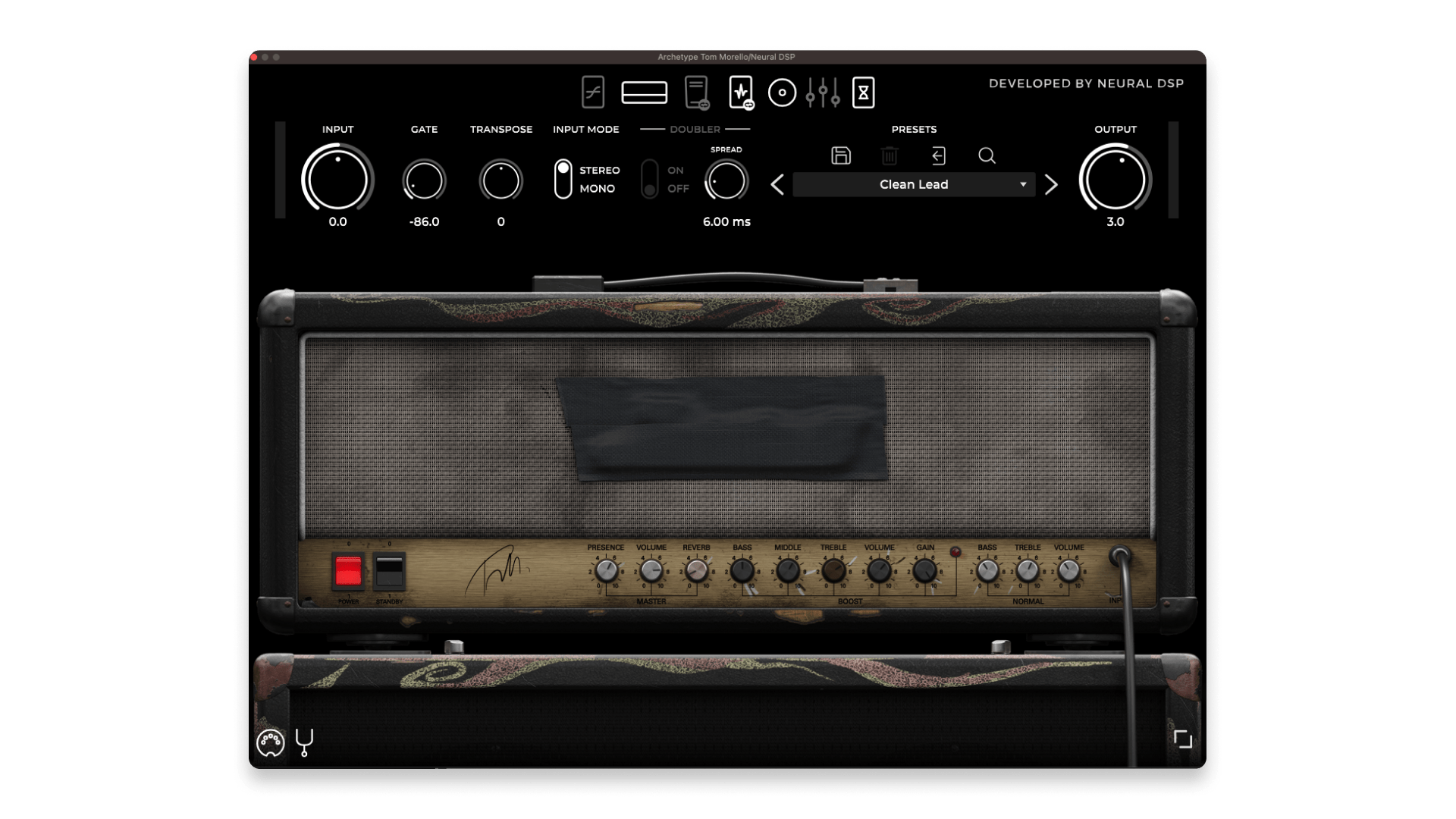
Neural DSP Specs
| Type | Algorithmic modeler |
| Compatibility | Mac M1 & Intel, Windows |
| Presets | 150+ |
| Additional features | Comprehensive effects, EQs, artist made presets |
| Price | 99$ |
The cleanest setting I could find in the Tom Morello pack sounded huge &nd crisp.
Pros:
- Impressive and huge sound
- Tons of customization features
- Presets made by household name artists
- The best impulse response and analog modeling by far
- Free trial
Cons:
- It’s not free but its pricing system feels fair
Neural DSP got its start making premium guitar amp plugins in 2017. The company has built an impressive selection of plugins complete with highly accurate emulations and celebrity-made presets.
We were very impressed with where Neural DSP has gone with its plugin design, sound and quality of presets.
The amp I initially downloaded was made in collaboration with Rage Against the Machine’s guitarist Tom Morello (I couldn’t resist getting my hands on his iconic, chunky nu-metal tone).
It was fun playing around with the presets, but I thought the level of control I had over the cleaner tones in the Fortin Cali amp (and the surprisingly huge sound the amp produced) was even more impressive.
If you’ve got a decent budget or if you’re a fan of a specific guitarist who has worked with Neural DSP, you really can’t go wrong with this plugin.
Grab a free trial and hear it for yourself!
2. Best free amp simulator plugin: Amplitube 5 CS
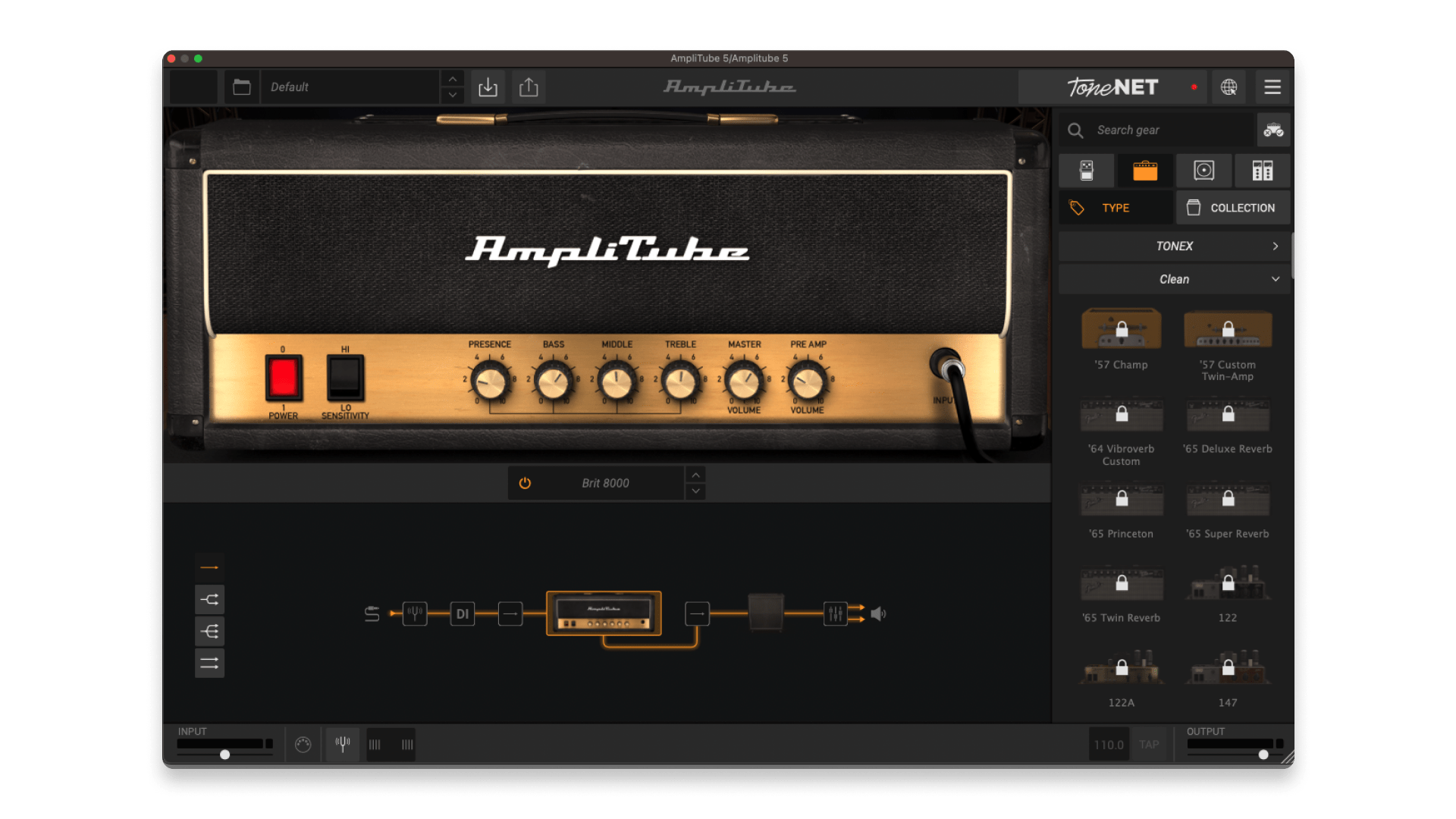
AmpliTube 5 CS Specs
| Type | Algorithmic modeler |
| Compatibility | Mac M1 & Intel, Windows |
| Presets | 42 models, 5 amps |
| Additional features | 10 fx pedals |
| Price | Free |
AmpliTube also a crunchy tone, but I thought it wasn't the biggest tone compared to premium options.
Pros:
- Get started for free
- Great amp simulations including name brands like Mesa Boogie
- Full control over amp knobs to dial in your sound
Cons:
- A lot of content is behind paywalls
- Limited presets and effects
IK MultiMedia’s flagship product, AmpliTube has been around for quite a long time. Since the company’s founding in 1996, IK has built its name on its amp simulation plugins.
AmpliTube 5 is IK’s most recent plugin that offers an enormous library of amps, cabinets, stompboxes and more.
Its free version in CS is a great option for adding a few pristinely-made amps to your plugin library. If you’re curious about getting some crunchy guitar tone in your music, grabbing this freebie is a great option.
Of course, a lot of the content in the plugin is gated behind paywalls—but with the free edition you get five free amps to try out.
Its paywalled options are well-made and sound great, especially since it seems to have partnered with some pretty big guitar brands.
But because the amps are packaged into various groups, the price of getting access to more can go up pretty quickly.
If you do see an amp you’ve always wanted to play, give it a try. The plugin offers unlimited demo access to its paywalled amps, with white noise added every 5 seconds.
3. Best pedal box: MixBox SE
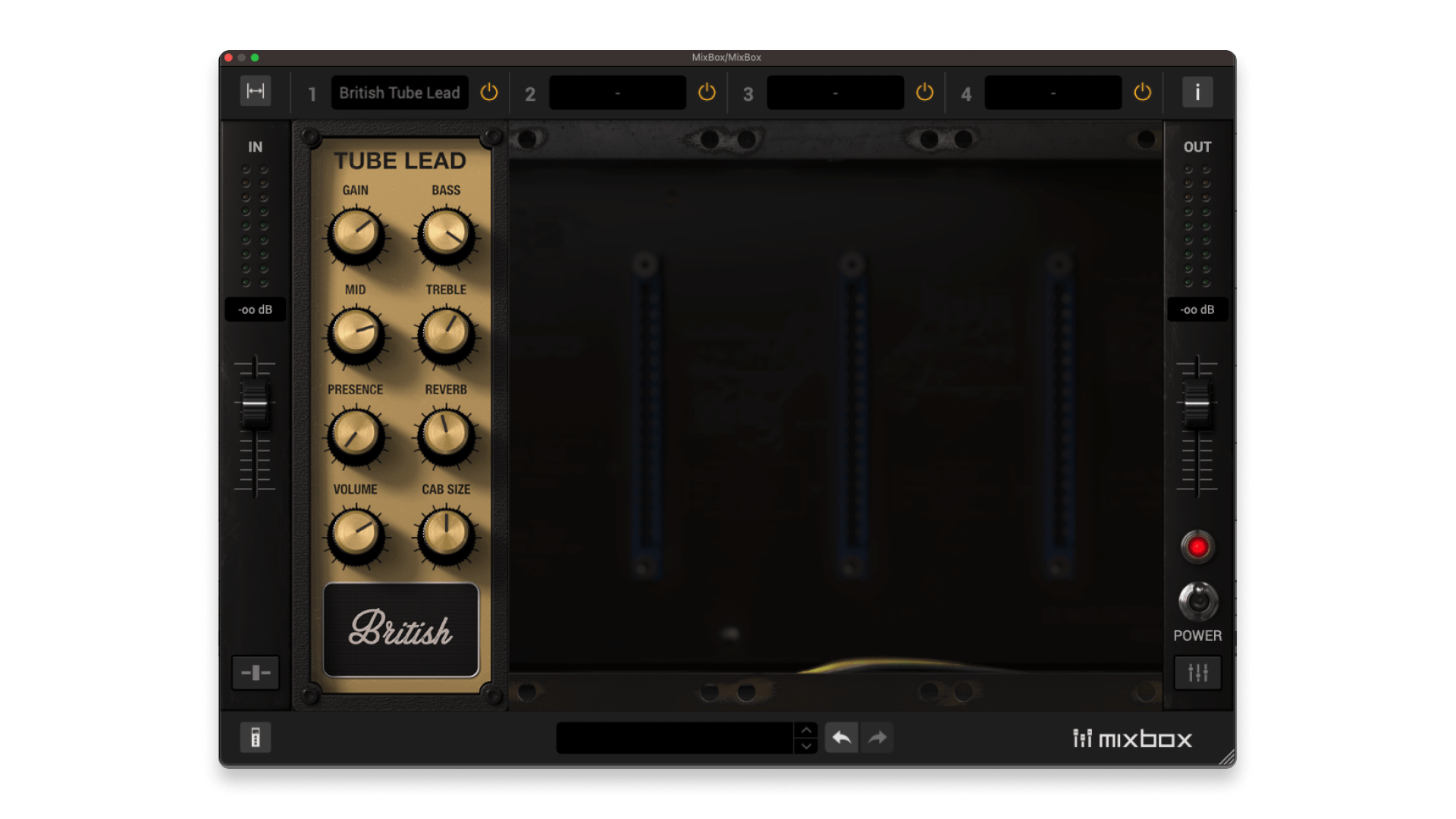
MixBox SE Specs
| Type | Circuit modeling distortion preset |
| Compatibility | Mac M1 & Intel, Window |
| Presets | 9 amps, 70 effects, 600 presets |
| Additional features | Audio effects rack primarily, with amp simulation included |
| Price | Included with LANDR Studio or $99 standalone |
MixBox sounded great, using the British Amp that likely models a Vox AC30 delivered the large and chimey tone you'd expect.
Pros:
- Huge selection of effects, EQs, compressors, distortion and much more
- Preset library is impressive
- Versatile in that it offers usages well beyond amp simulation
- Included with LANDR Studio subscriptions
Cons:
- Limited compared to dedicated amp simulators
MixBox isn’t strictly an amp simulator, in fact, it offers a fair bit more than just amps and effects pedals.
But the included set of nine amps sounds great, and when paired with other effects pedals and tools that can be easily added to the plugin’s effects chain, you get some pretty powerful tone-building capabilities.
Personally, I own a Jazz Chorus amp from Roland, and I find MixBox’s Jazz Amp 120 recreation to be satisfying, especially when paired with the plugin’s tape emulator.
4. Best bass amp simulator: Audified GK Amplification 3 Pro

Audified GK Amplification Pro 3 Specs
| Type | Comprehensive bass amp modelling plugin |
| Compatibility | Mac M1 & Intel, Windows |
| Presets | 3 amps, mic selections |
| Additional features | DI blending, cabinet simulations, tone controls |
| Price | Included with LANDR Studio Pro subscriptions |
Pros:
- Great selection of iconic amp heads
- Good tone controls
- Added mic’ing and DI blend is a good bonus
Cons:
- Mostly optimized for bass guitar recordings
Wet bass guitar audio from GK Amplification 3 Pro
Dry bass guitar audio from GK Amplification 3 Pro
Audified’s faithful recreation of three iconic Gallien-Krueger amps brings incredible bass tone shaping directly into the DAW.
The plugin includes GK’s most famous amp heads 800RB, MB150, and Fusion 550 plus access to variety of cabinet sizes and types.
On top of that you get a handful of mic placement and mic type options to dial in a “recording” style sound, plus you can even blend DI’d amp head tone with recorded tones.
As a fan of Gallien-Krueger amps, I was impressed by this plugin and I think it’s great that LANDR Studio Pro subscribers get it with everything else in the subscription.
5. Best individual amp model: UAD 55’ Fender Tweed Deluxe
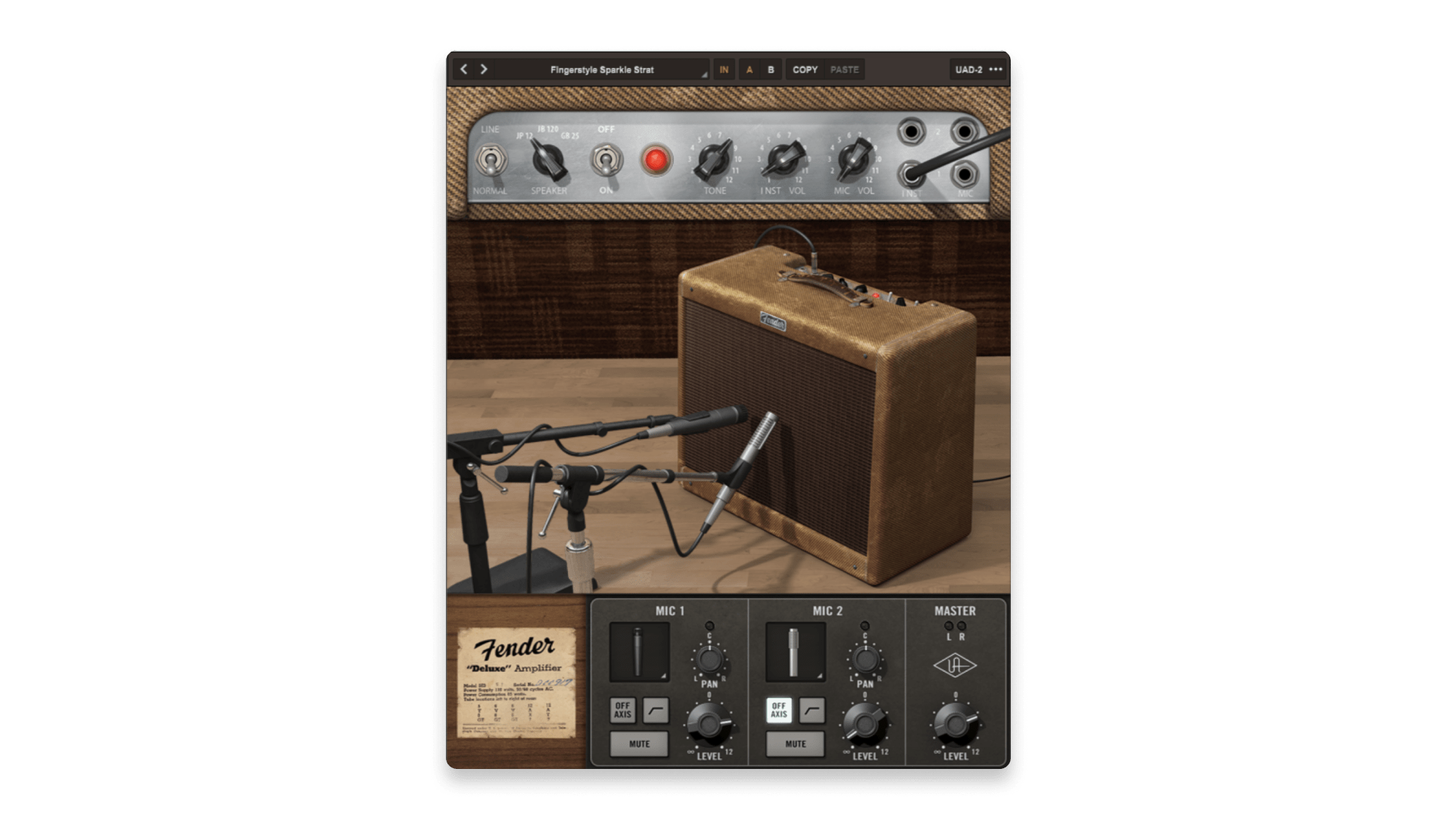
55` Fender Tweed Deluxe Specs
| Type | Impulse response amp modeler |
| Compatibility | Mac, Windows, UAD plugin hosts |
| Presets | None |
| Additional features | Three cabinet sizes, mic emulation options |
| Price | $49 |
I was really impressed with how close this re-creation sounded, I got all that classic warmth and crunch you'd expect from UAD here.
Pros:
- Meticulously modeled to Universal Audio’s specifications
- Optimized for Universal Audio preamps
- Great sounding re-creation of a real 55’ Fender Tweed Deluxe
Cons:
- Only one amp, with no presets
- Locked into the UAD ecosystem, performs best using UAD interfaces
Universal Audio has always had its unique take on how it makes and sells its plugins.
Since its origins as an audio hardware maker in 1958 and resurgence as a pro-audio software developer, UAD has led the market by example. Their pristine pre-amps, interfaces and plugins are all meticulously designed to work with each other.
That’s why we weren’t surprised by how good UAD’s recreation of the Fender 55’ Tweed Deluxe was when we tested it.
I liked that the plugin doesn’t come with presets per se. Instead, they simply provide the amp with its standard controls and some mic options.
Then they stand back and let the model do the talking, and talk it did. This was easily one of the most authentic sounding re-creations of any specific amp on this list.
Of course, if you don’t want to use a Fender `55 Tweed Deluxe, you could grab any of the other amp models that UAD offers.
The drawback here is that you’re not getting a package of different amps, you’re buying each one as a separate product.
So consider that if you’re on a budget, especially because these plugins are heavily optimized to work best with Universal Audio’s well-reviewed—but somewhat expensive—interfaces.
6. Best free algorithmic modeler: Neural Amp Modeler
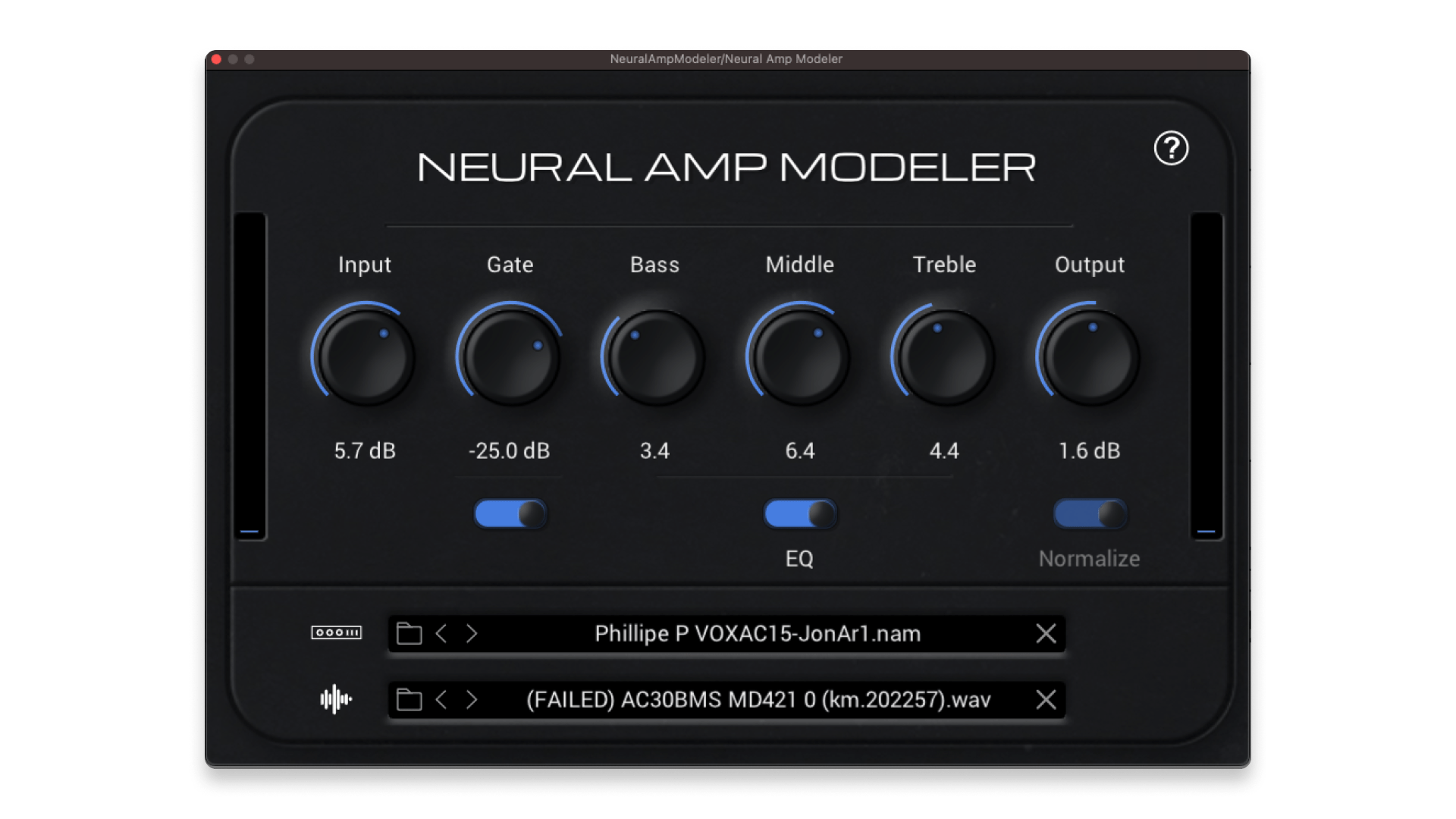
This was far from the best result, but I think the concept is cool. If I had more research time I'm sure I could have found and downloaded a better open source amp model and impulse response.
Pros:
- Free and open source algorithmic modeler
- Supports a growing selection of accurate amp models
- Also supports impulse responses
Cons:
- You must find the amp modeling codes and impulse response recordings yourself
- Impulse response is reported to have issues in certain DAWs
Neuvral Amp Modeler is an open-source algorithmic modeler that allows you to upload your own models and impulse responses to create a completely custom amp.
Of course, if you don’t want to set up your own model (which requires a bit of coding to do), you can find and download amp models made for the plugin on forums like Reddit and GitHub.
Impulse response files are also available on many websites, and you can find them with a quick internet search.
I had a bit of trouble getting the impulse response section of the plugin to work, but I was able to find a decent sounding model of a Vox AC15 amp.
Considering that the plugin is free (and that there’s a community around it making amp models that are free to use), I think this plugin is worth a look.
7. Best free guitar plugin suite: Guitar Rig 7 Player
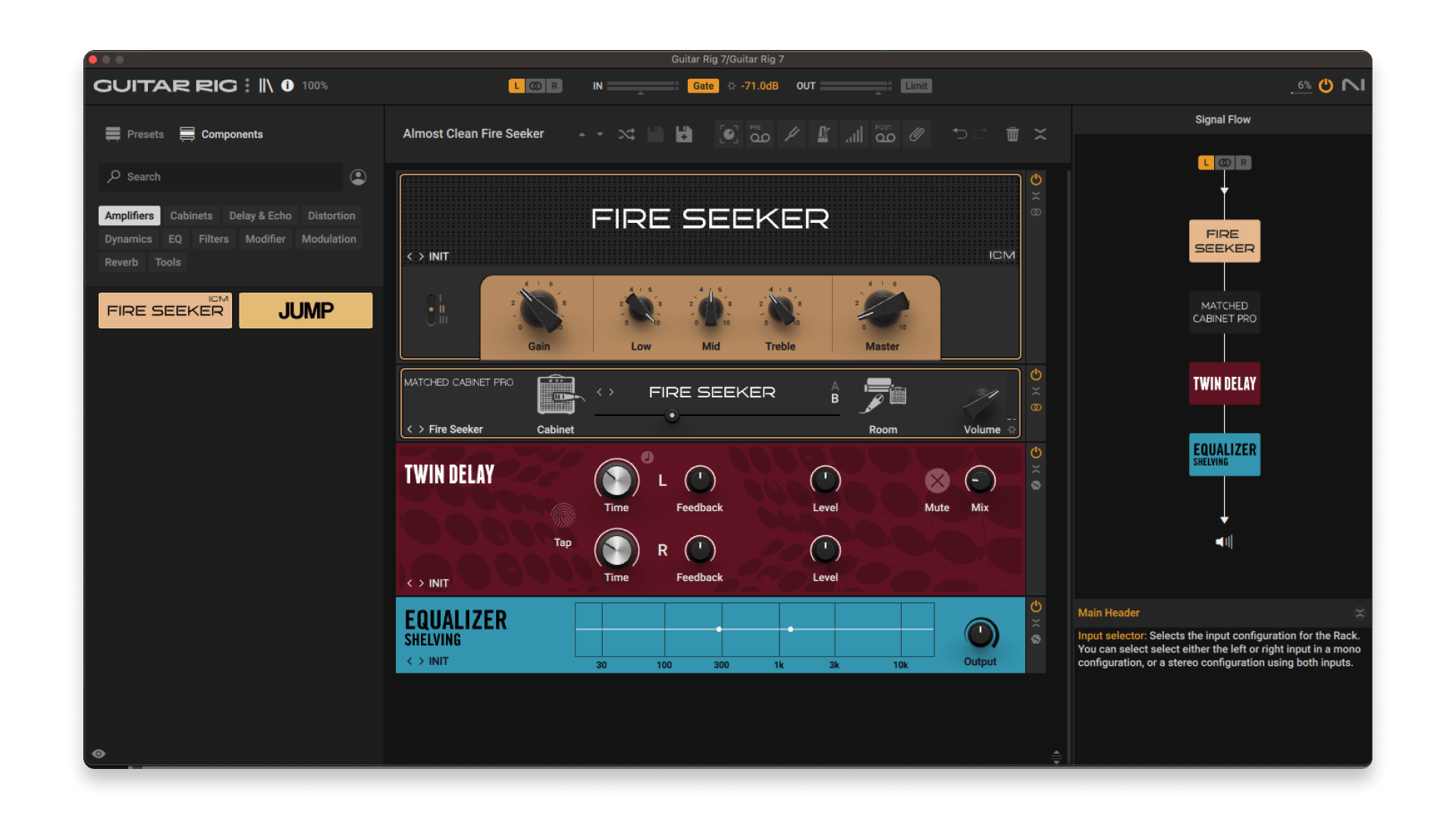
Guitar Rig 7 Specs
| Type | Circuit modeling distortion preset |
| Compatibility | Mac M1 & Intel, Window |
| Presets | 60 |
| Additional features | 2 amps and 18 effects, EQs, compressors and more |
| Price | Free |
Guitar Rig 7 Player sounded pretty good. Is it better than AmpliTube? Who knows... try them both for free and see what you think!
Pros:
- Free and well-reviewed
- Its Fire Seeker amp uses NI’s internal circuit modeling engine
- Lots of presets compared to other free amps
Cons:
- Limited selection for free users, upgrades are paywalled
- Fewer amps than the other free amp simulator plugin on this list
Guitar Rig 7 is Native Instruments’ answer to IK Multimedia’s AmpliTube.
The well-respected developer released the plugin in 2003. Since then, it’s become an impressive modular system with a lot of amps, effects pedals, rack gear and more.
The free edition offers two amps to try out, but more importantly, it includes 60 presets and effects. This outshines IK Multimedia’s AmpliTube slightly.
If you’re looking for another free-to-try plugin that offers a handful of well-made amp simulators, Guitar Rig 7 is worth your time.
8. Best user-friendly guitar plugin: LANDR FX Electric
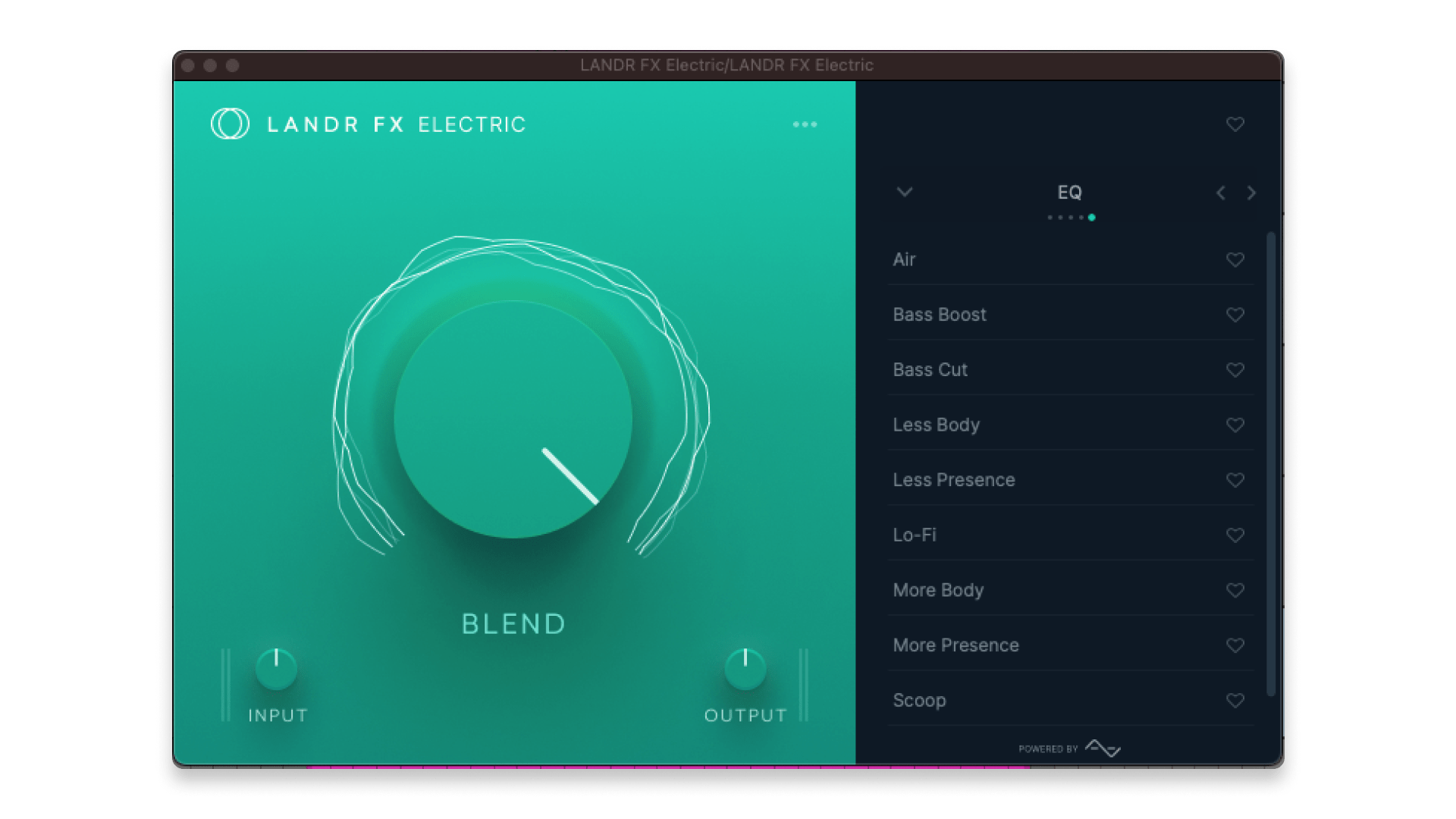
FX Electric Specs
| Typep | Guitar effect plugin |
| Compatibility | Mac M1 & Intel, Window |
| Presets | 60+ |
| Additional features | Creative, reverb, effects, EQ and delay categories |
| Price | Included with LANDR Studio subscriptions |
It's pretty difficult to achieve such a nice clean tone. FX Electric delivered here.
Pros:
- Easy one-knob settings make it easy for beginners to dial in their sound
- Pleasing clean tones designed by pro engineers
- Applies a variety of pre-configured effects to your guitar signal
- Delivers a surprisingly pro sound for such a simple interface
- Easy to set up a signal chain with multiple instances
Cons:
- Limited customization
- Few heavy distortion settings
Our own LANDR FX series is a collection of one-knob plugins that are designed to deliver great results with an easy-to-use interface.
One of these plugins is LANDR FX Electric, which was specifically designed for electric guitar and bass.
I personally use this one all the time and enjoy the cleaner tones it can create. It adds the right amount of warmth and saturation while keeping a chunky clean tone with a tiny amount of bite.
It would be pretty time-consuming to try and achieve those tones using EQ, distortion plugins and compressors.
It lacks heavier rock and punk guitar tones, so I think it’s better suited for pop, R&B and jazz-inspired playing rather than heavier rock genres.
9. Best guitar plugin for Logic: Logic Pro’s Amp Designer

Amp Designer Specs
| Type | Circuit modeling distortion preset |
| Compatibility | Apple only |
| Presets | 20 amps with presets for each |
| Additional features | Mic placement controls, interfaces with other Logic plugins |
| Price | Free with Logic Pro |
Amp Designer was pretty good, especially considering that it's essentially free. If you want to upgrade from here get a premium paid plugin like Neural DSP.
Pros:
- Solid amp designer considering the plugin is free with Logic
- Lots of customization options, including cab controls and amp knob interface
Cons:
- Not as clear or authentic as paid amp designer plugins
- Limited presets
- Only available for Apple users
Logic Pro’s Amp Designer is comparable to the amp simulator plugins offered by other DAWs like Ableton Live.
However, I felt that the Amp Designer in Logic Pro offers quite a bit more control and customization. There are also many more amps and presets than in Live.
On top of that, the UI features amp controls that mimic the look of real-world gear, offering a similar experience to premium plugins.
We’ve rated Logic Pro very highly in past reviews of the best DAWs on the market, so it’s no surprise that Amp Designer holds its own in the amp simulation market.
10. Best amp simulator pedal: Strymon Iridium
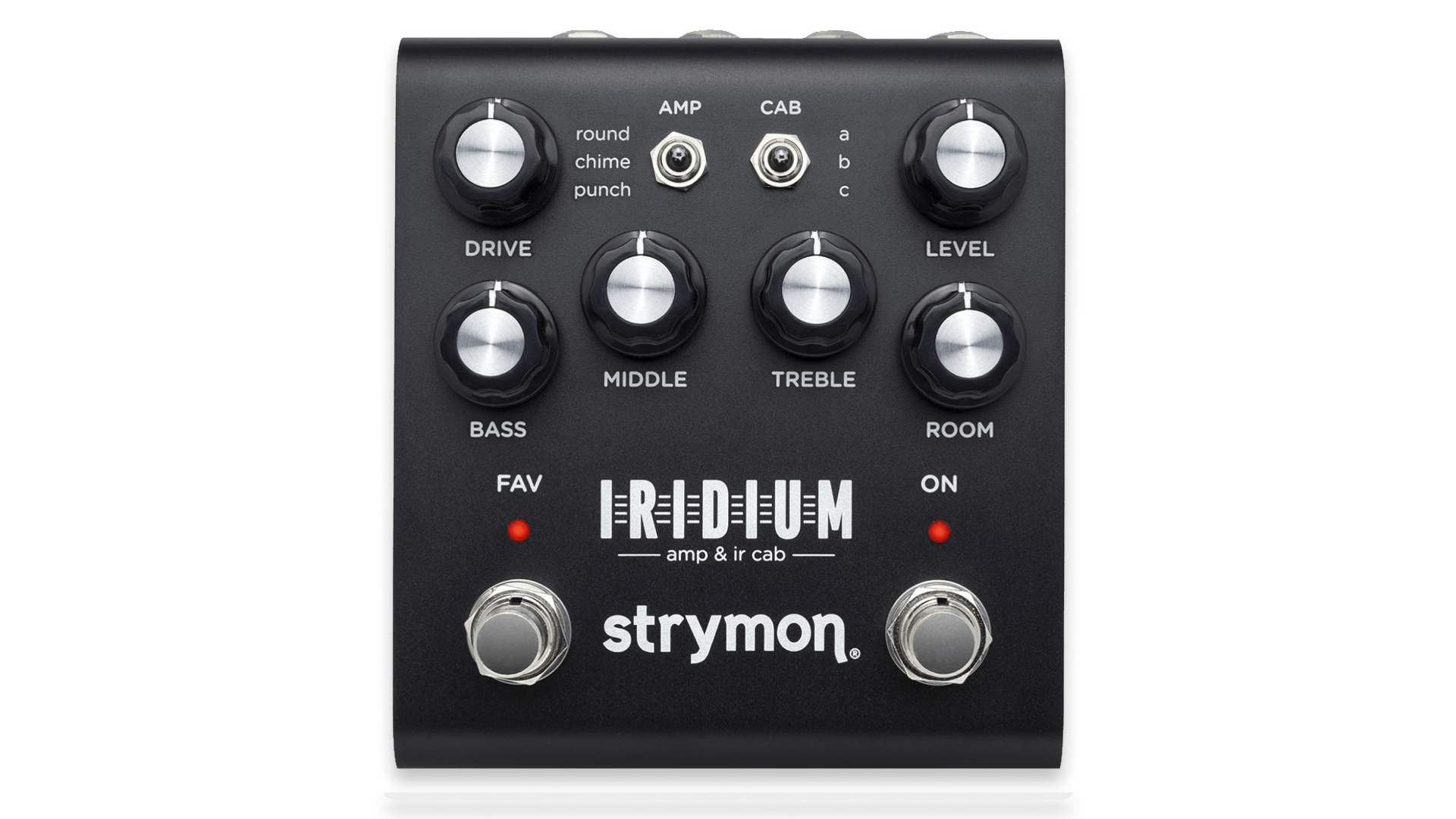
Iridium Specs
| Type | Impulse response amp modeler |
| Compatibility | Strymon software connection, audio interface |
| Presets | 27 (three amp models with nine cab options each) |
| Additional features | Compact guitar pedal, fits in a pedalboard |
| Price | $399 |
Pros:
- Great-sounding amp modeler built by a respected brand
- Compact pedal that fits on stage and in the studio
- Ability to upload your own impulse response settings
- Excellent choice for serious guitar players
Cons:
- Hardware is always expensive, but it holds its value
Because amp simulation tools are so useful in so many environments, a cottage industry of amp-designer pedals and hardware has popped up to help guitarists take their favorite amps with them wherever they go.
I went with Iridium from legendary pedal maker Strymon for this list. It’s a high-quality option at a reasonable price when compared to other amp designer pedals on the market.
Amp designer pedals from other brands price from $399 to well over $2,000, so at $399 Iridium is certainly at the lower end.
Despite this, Iridium is widely lauded as one of the better amp designer pedals on the market. sounds great and offers a ton of customization with its EQ, drive and room reverb knobs.
Plus, its relatively small footprint means it works well in pedal boards, in home studios or on-the-go.
11. Best guitar plugin for Ableton: Amp & Hybrid Reverb by Ableton
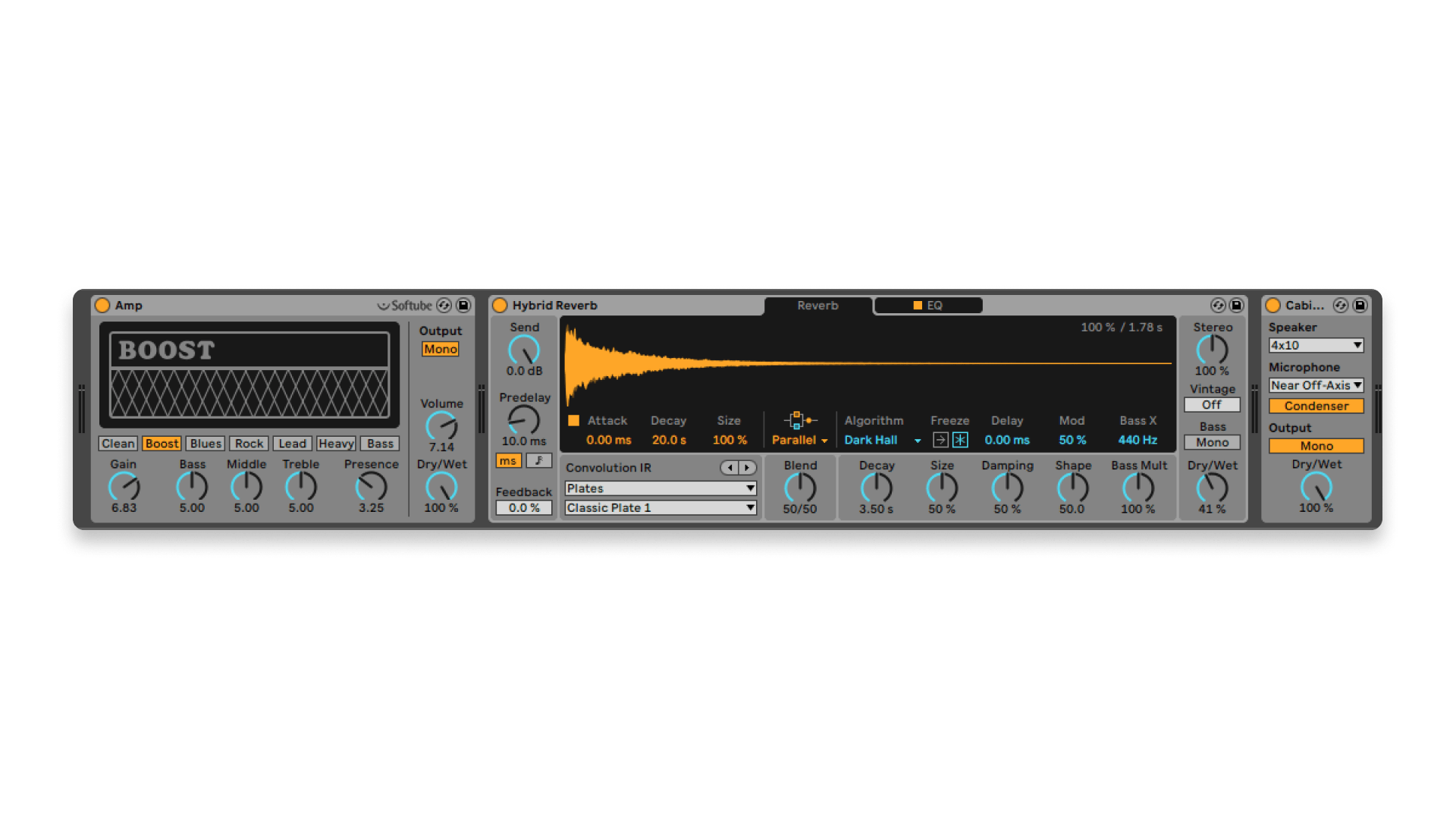
Amp & Hybrid Reverb Specs
| Type | Algorithmic and convolution |
| Compatibility | Ableton Live only |
| Presets | 12+ in Ableton Live 12 |
| Additional features | 7 amp types, cabinet plugin |
| Price | Free with Ableton 9 and up |
Ableton Amp created a boxy tone with a pleasant plate reverb on top, but it was not as good as other free plugins arguably.
Pros:
- Included as stock plugins with Ableton Live 11 and above
- Option to add Ableton’s Cabinet tool to change the recording quality
- Easy to download more presets from Ableton and other online forums
Cons:
- Limited presets included
- Amp modeling quality isn’t as good as others on this list
If you’re an Ableton Live user and you’re on a budget, you should definitely check out the DAW’s in-suite Amp plugin.
On its own, the plugin felt a bit limited considering that it only had 7 amps and a handful of presets.
But paired with the DAW’s wider suite of reverbs, effects, EQs, compressors and other plugins, it’s definitely possible to easily build a nice-sounding signal chain. It especially sounded good with Ableton’s Hybrid Reverb, which can model a room using impulse response recordings.
Considering that this plugin is free with Ableton, I’d say give it a shot, especially if you’re on a budget.
Ready to shred?
Amp designer plugins are more and more a go-to option for guitarists and producers looking to add studio quality guitars to their tracks without a recording studio.
With a simple interface and few plugins, you really can authentically simulate guitar amps in your home, on the road or on stage.
Once you have the right plugin or pedal for your needs, get that guitar out and start shredding.
We can’t wait to see what licks you come up with using your guitar amp simulator.
Gear guides, tips, tutorials, inspiration and more—delivered weekly.
Keep up with the LANDR Blog.



